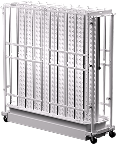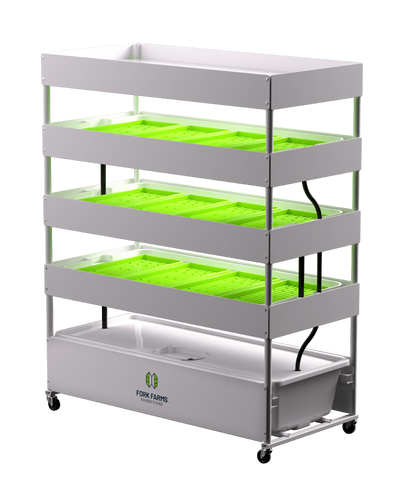The Must-Have Back-to-School Item for Every Teacher: Hydroponic Gardens
This summer, Boston Public Schools introduced an exciting new tool into their curriculum - hydroponic systems. Paul Barry, a Special Education teacher at BPS Madison Park, spoke about the incredible opportunities these systems offer students.
“Students are using math skills when testing the units for pH and total solids, and they are eating what they plant,” Barry said. “In addition, they are learning science concepts, like earth cycles, photosynthesis, energy flow through ecosystems, and reducing their carbon footprint. Students learn how to plant, cultivate, and harvest crops. All work is student-generated. This hands-on experience has been a promising inclusion to student learning.”
With the ability to teach important skills in STEM,nutrition, and sustainability, hydroponic systems are becoming an essential classroom tool. Boston Public Schools is just one example; many schools across the country are finding creative ways to integrate hydroponics into their education lessons.
Why Hydroponic Gardens Are a Game Changer for Teachers
Hydroponic gardens are proving to be a valuable educational tool that help students develop both academic and lifelong skills. These systems can turn disengaged students into enthusiastic learners, sparking a passion for agriculture and science.
Here’s how teachers are using hydroponic gardens in their classrooms:
Enhancing STEM Education
Hydroponic gardens offer an engaging way to teach STEM subjects like physics, chemistry, and biology. Students can explore plant growth, experiment with light and nutrient variables, and dive into the science behind plant biology. By maintaining hydroponic systems, students can master scientific concepts through hands-on experience, bringing environmental science to life in a practical setting.
Fostering Community Engagement
Many schools use hydroponic gardens to connect with their local communities. Students learn the value of donating excess produce to food banks and what it means to be responsible community members. Some schools even host events with local businesses to introduce hydroponic gardening and fresh foods to the wider community.
At Eisenhower Science Academy in Philadelphia, a hydroponic garden helped students learn about food deserts in nearby Norristown, deepening their understanding of community issues and involvement.
Supporting School Nutrition Programs
Hydroponic gardens can be integrated into school nutrition programs, providing fresh produce for cafeterias. For instance, Ashwaubenon High School in Wisconsin serves only fresh greens grown in their hydroponic garden. This initiative not only teaches students about hydroponics and nutrition, but also reduces the carbon footprint associated with transporting food.In some cases, hydroponic growing systems can supply school cafeterias with produce grown on-site in schools year-round.
Encouraging Interdisciplinary Learning
Hydroponic systems aren’t just for science classes—they can also be incorporated into math, environmental studies, and sustainability lessons. Students who maintain these gardens engage in real-world farming scenarios, such as determining crop cycles and propagation.
Other subjects that hydroponic gardens can support include:
- Nutrition and Health: Growing their own fruits and vegetables encourages students to consume more fresh produce and try new foods.
- Critical Thinking and Problem-Solving: Hydroponic systems challenge students to troubleshoot issues like nutrient deficiencies and pH imbalances. In Las Vegas, the nonprofit Green Our Planet provided grants to introduce hydroponics in schools, teaching students about nutrient-rich solutions that use 80% less water.
- Economics: Students learn about budgeting for equipment, seeds, and nutrients, as well as the economics of supply and demand. Teachers can also discuss the economic benefits of hydroponic gardens for communities, restaurants, and organizations.
- Sustainability: Hydroponic systems use less water andland compared to traditional farming, making them a more sustainable option. Vertical hydroponic systems, which require minimal space, can teach students about sustainable agriculture, especially in areas with limited growing seasons.
- Food Security: Hydroponic systems help create a hyperlocal food system, providing year-round access to fresh produce. For example, Carter G. Woodson Elementary School in Brooklyn incorporated hydroponics into their curriculum, teaching students about urban gardening and how to combat food insecurity.
Getting Started with Hydroponics in the Classroom
Educators are increasingly turning to hydroponic technology to grow hyperlocal produce and enhance educational opportunities. Our Flex Farm system, a vertical hydroponic growing solution, requires just 9 square feet of space and can grow 25 pounds of leafy greens in less than a month. This flexible system allows teachers to start small and expand as needed, adapting to any school environment.
Ready to bring hydroponic gardens into your classroom? Visit the Fork Farms website to learn more.























